- Home
- Adam Nicolson
God's Secretaries Page 8
God's Secretaries Read online
Page 8
It is a glimpse of the underlying realities. At the conference and at court the bishops may have kneeled and exaggerated the language of deference. In sermon after sermon they may have drawn crawling equivalencies between the majesty of God and the excellence of the Stuarts, what Cordelia in King Lear, a play Shakespeare was writing this same summer, calls ‘that glib and oily art/To speak and purpose not’, but when it came to the rub, money was not forthcoming. A single copy of Bancroft’s begging letter for the Bible survives—in the archives of the Bishop of Norwich, noted as received by the bishop’s office—but not a single reply to it has ever been found.
It is difficult to tell whether the bishops contributed or not. Certainly, Lancelot Andrewes, who became Bishop of Chichester in 1605, and then of Ely in 1609, placed several of the Translators either in parishes in his diocese or as prebendaries in his cathedral. Other bishops directly involved in the translation did the same. But the question is opaque and it may well be that until other money, from commercial sources, came into the project several years later, as will emerge, the translation was short of cash.
As with any complex project, all parts had to be advanced at the same time. There could be no waiting for money before the other elements—above all the organisation, the control and checking systems—were put in place. Bancroft recognised from the start that the translation had to be a joint enterprise. The idea was far from unprecedented. Although the first sixteenth-century translation of the scriptures into English was the work of a solitary hero, William Tyndale, making his extraordinary achievement on the run and in hiding in a string of German and Flemish cities, almost never breaking cover, applying himself with an unparalleled and solitary dedication to the task of bringing the scriptures, as he declared, ‘to the English ploughboy’, that had not been the general pattern. The 1539 Great Bible had been produced for Henry VIII by ‘dyverse excellent learned men’. The Geneva Bible had been translated by a small team of three or four English divines. The Bishops’ Bible had been translated (rather badly) by a team of fourteen bishops, appointed by the Archbishop of Canterbury, and each allocated three or four individual books. Even the English Roman Catholics, at their college in Rheims and then Douai, had applied a small team of men to the job.
Jointness was the acknowledged virtue of the age. Most of the plays performed in Jacobean England were written by more than one writer. A joint translation, by a large number of people, consulting the original manuscripts in both Greek and Hebrew, but relying carefully on much of the work which the sixteenth-century translators had done, was completely concordant with the ideology of the time. Lack of jointness, either through an overweening individuality or through simple dissolution, a falling apart, was considered an overriding error and a sin.
The age was stiff with an insistent individuality, an overwhelming demand for ‘authorship’, for being master of one’s fate, for claiming an individual significance beyond the world and society in which you had your being. ‘Every one vaunts himself,’ Philip Stubbes the Puritan pamphleteer had wailed in The anatomie of abuses, ‘crying with open mouth, I am a gentleman, I am worshipful, I am honorable, I am noble, and I cannot tell what; my father was this, my father was that; I am come of this house and I come of that.’
The jointness on which so many of the moralists of the time lay such emphasis was an attempt to mend the cracks which the eruptive egotism of the time was opening. It is the great and tragic theme of King Lear, that selfhood and disunity, a natural urge in man, nevertheless destroy the life they aim to elevate. Jointness, by contrast, was slow and careful. It required consultation, the gradual application of principles, not their violent banging in. Although the evidence is a little uncertain, these were probably the years in which woodscrews, made of brass, with the thread on them hand-cut, were first used in the making of furniture. The chairs and joint-stools made with screws—as well as with the more conventional oak pegs—became, in sermon after sermon, a symbol of coherence and propriety, of jointness. ‘In reformations of great importance,’ the church historian Thomas Fuller told his congregation, ‘the violent driving in of the nail will either break the head or bow the point thereof, or rive and split that which should be fastened therewith. That may insensibly be screwed which may not be knocked into people. Fair and softly goeth far.’
Fair and softly goeth far: the irenicon of the new translation was to be a joint product. If Bancroft’s words are to be trusted, and there is no reason why they shouldn’t be, the extraordinary degree of jointness in the project was James’s own idea.
Everything in the modern frame of mind, trained up on centuries of individualism, and on the overriding importance of individual freedoms, rebels against the idea. Joint committees know nothing of genius. They do not produce works of art. It is surely lonely martyrs who struggle for unacknowledged truths. Committees thrive on compromise and compromise produces fudge and muddle. Isn’t the beautiful, we now think, to be identified with what is original, the previously unsaid, the unique vision of the individual mind? How can a joint enterprise of this sort produce anything valuable? There may be one or two modern examples of successful co-operative writing—Pound and Eliot, perhaps Auden and Isherwood—but the idea of a committee producing a work of genius? That today sounds like a joke.
Not in 1604. If you think of the King James Bible as the greatest creation of seventeenth-century England, a culture drenched in the word rather than the image, it is easy to see it as England’s equivalent of the great baroque cathedral it never built, an enormous and magnificent verbal artifice, its huge structures embracing all 4 million Englishmen, its orderliness and richness a kind of national shrine built only of words. Considered like that, it is inconceivable that the project should have been put in the hands of any individual. It can be no surprise that the king, in whose speeches the word ‘love’ comes up in paragraph after paragraph, and for whom unity was an almost sacred watchword, should summon a huge committee to do the work; it is unthinkable that he should have done it in any other way. The only mind that could have produced the King James Bible was the mind of England itself.
The translating committee was to be divided into six sub-committees. Each was to be called a ‘company’, a powerful word in Elizabethan and Jacobean England, not only the name given to the groups of actors who performed in the London playhouses and at court, three of them now having acquired powerful patrons in the king, Queen Anne and Prince Henry, but of the great new imperialist enterprises with which England was reaching out to the commercial opportunities of the newly discovered world. The Muscovy Company, founded in 1555, was the first English joint-stock company: unlike previous enterprises, the money invested in its shares remained with the company between voyages instead of being repaid after every voyage. Its jointness was its virtue and its security. Other companies soon followed: the Eastland, for the Baltic, in 1579, the Levant, for the eastern Mediterranean and all its links to the great trade routes of Asia in 1581, the Guinea, for West Africa, founded in 1588 and finally the East India Company, founded in 1600, to deal with the sub-continent of India and the Spice Islands beyond it, and to bring back to England the cottons and silks, the saltpetre and indigo, and above all the spices which those exotic and dangerous coasts could provide.
Potency, enlargement, drama and success were all built into the idea of a company. The application of this idea, and this word, to Bible translation was a real innovation, as was the scale of it. The six companies, each with a ‘director’ – a title that surely also carries a hint of efficient, modern commercial organisation—were originally envisaged to have nine members each, a total of fifty-four, a body of men nearly four times the size of any previous Bible enterprise.
There is also a hint of numerological order to this arrangement. Six is the number of the Trinity (3) multiplied by the number of testaments (2). Each company was to have eight members, giving a total of forty-eight Translators, with six directors supervising them. This is nowhere made explicit, but
forty-eight is the number of apostles (12) multiplied by the number of evangelists (4). It may be, in an age deeply intrigued by the mystery of mechanical toys, by the mathematical wonders of interlocking numbers and by the charm of ingenious mechanisms (Robert Cecil, for one, collected such things with a passion), that the system James and Bancroft were setting up was, like a piece of Jacobean architecture or decoration, designed to be richly and intricately interrelated, because that too felt like the right and civilised way to do it.
Bancroft then issued the letter of instructions to the Translators. It is the central document in the story, the template against which the text is to be measured. Again, if we are to take Bancroft’s words seriously, these were the king’s own rules, Bancroft merely the transmitter of them. They are a remarkable insight into the workings of the royal mind. But the instructions are deeply encoded, concealing as much as they reveal, assuming as much as they make explicit. Exactly what they mean will emerge, but what is obvious from the start is that they exude a habit of orderliness: numbered, coherent, managerial and modern. They give a rather different picture of James and his advisers than history has chosen to remember.
It is worth analysing these instructions in some detail. There is no hint of inspiration, or even of prayerfulness, no idea that the Translators are to be in the right frame of mind. These are exact directions, state orders, not literary or theological suggestions. It is not as if inspiration was unheard of. Inspiration was an established part of literary and theological thought. And wild, inspired Blakean prophets of course appear in the Bible itself, writing down, as a phrase in the apocryphal book of Esdras unforgettably describes it, ‘the wonderfull visions of the night, that were told, which they knew not’.
There is none of that. This is a job to be done with immense care and attention to detail. There are strong hints about the kind of language they were to employ—it should be conservative—but no guide as to the rhetoric or musicality of the translation. For that, Bancroft would have to rely on the literary instincts of his chosen scholars. A copy of the instructions, now in the University Library in Cambridge, is entitled simply ‘The rules to be obserued in translation’. The sixteen separate instructions on two sheets are the record of an extremely efficient administrator at work. They are the scaffolding within which the King James translation was erected.
Rules 1 to 5 (numbered with a flourish in the manuscript) are concerned with continuity, with maintaining but regularising the Bible habits of the Elizabethan church, much like the other canons Bancroft was drawing up at the same time. This was necessary politics. To suggest that anything done in England over the last fifty years was not in itself excellent would play into the hands of the Roman Catholics. Were the English now admitting they had been in error all this time? Were they conceding what their Roman Catholic critics had been saying all along, that the official English version of the scriptures was unsatisfactory? That would have been poor politics.
1. The ordinary Bible read in Church commonly called the Bishopps Bible, to be followed, and as little altered as the Truth of the Originall will permitt.
The Bishops’ Bible was acknowledged by everyone to be not as good as the Geneva Bible, which the king hated because of its marginal notes, but the Bishops’ Bible was the official Bible and as such had to be respected. Its language was heavy with latinisms and strange phraseology, loathed by Puritans (one said he would prefer to read ‘the alKoran’), and avoided phrases like ‘a pissing she-mule’ which the bishops thought vulgar. But that was its problem. The Bishops’ Bible was too elevated for its own good, cloth-eared and inaccessible. Famously, instead of ‘Cast thy bread upon the waters’, the bishops had written, ‘Lay thy bread upon wet faces’. Pompous, obscure and often laughable, it was never loved.
One account, perhaps unreliably, maintains that forty copies of the Bishops’ Bible were run off by Robert Barker, the king’s printer, and the sheets distributed to the Translators, unbound, for them to mark or amend. A copy of the Bishops’ Bible does survive in the Bodleian Library in Oxford, marked as if with notes by a seventeenth-century Translator, in ways, as will emerge later, that are particularly revealing about the methods used. But the task was too serious for Rule 1 to be taken at face value: the Translators absorbed, copied and adapted from any source they wanted (Rule 14 says as much) and the Bishops’ Bible is thought to have contributed no more than about 8 per cent of its phraseology to the King James Version. Vast quantities of linguistic scholarship and skill were to be assembled on this project, with scholars more than capable of teasing nuance and subtle meaning from Hebrew, Greek and even Aramaic scripts. They were not going to be hobbled by the rather hurried production of the Elizabethan bishops.
2. The names of the Profyts and the holie Wryters, with the other Names in the text to be retayned, as near as may be, according as they are vulgarly used.
Some Puritans maintained that the names of the great figures in the scriptures, all of which signify something—Adam meant ‘Red Earth’, Timothy ‘Fear-God’ – should be translated. The Geneva Bible, which was an encyclopaedia of Calvinist thought, including maps and diagrams, had a list of those meanings at the back and, in imitation of those signifying names, Puritans, particularly in their heartlands of Northamptonshire and the Sussex Weald, had taken to naming their children after moral qualities. Ben Jonson included characters called Tribulation Wholesome, Zeal-of-the-Land Busy and Win-the-fight Littlewit in The Alchemist (1610) and Bartholomew Fair (1614), and Bancroft himself had written about the absurdity of calling your children ‘The Lord-is-near, More-trial, Reformation, More-fruit, Dust and many other such-like’. These were not invented. Puritan children at Warbleton in Sussex, the heartland of the practice, laboured under the names of Eschew-evil, Lament, No-merit, Sorry-for-sin, Learn-wisdom, Faint-not, Give-thanks and, the most popular, Sin-deny, which was landed on ten children baptised in the parish between 1586 and 1596. One family, the children of the curate Thomas Hely, would have been introduced by their proud father as Much-mercy Hely, Increased Hely, Sin-deny Hely, Fear-not Hely and sweet little Constance Hely. Bancroft, and this royal translation of the Bible, could give no credit to that half-mad denial of tradition. It was one that travelled to America with the Pilgrim Fathers. Among William Brewster’s own children, landing at Plymouth Rock, were Fear, Love, Patience and Wrestling Brewster. It is one of the ironies of America’s relationship to the King James Bible that, at the very beginning of the Massachusetts colony, the thinking of the colonists and of the Bible, which would in time come to seem like their national text too, could not have been further apart. The Pilgrim Fathers would undoubtedly have taken the Geneva Bible with them.
3. The ould ecclesiasticall words to be kept viz. as the Word Churche not to be translated Congregation &c.
Bancroft, and almost certainly the king, was not prepared to give any ground in the language of the translation to the Presbyterians (who denied any scriptural authority to bishops) or Separatists (who would in time call themselves Independents and then Congregationalists). This was one of the oldest nubs of Bible translation. William Tyndale in his great 1526 ground-breaking translation of the New Testament had translated ecclesia not as ‘church’ but as ‘congregation’ and presbyteros not as ‘priest’ but as ‘senior’ (which he later changed, under pressure from Thomas More, to ‘elder’, as being the more English word). The entire meaning of the Reformation hinges on these differences. A presbyter, an elder, has no ancient priestly significance; he is not the conduit of God’s grace, he does not interfere with the direct relationship of each soul to God, nor, in Luther’s famous phrase, with the priesthood of all believers. If presbyter is what the scripture says, what need is there of bishops and archbishops? And if ecclesia means not church but congregation, what relevance to God can there be in the elaborate and expensive superstructure of an established church and the grotesque indulgences of its officers? Was the true meaning of the word ecclesia not a reproach to the habits of even such a godl
y bishop as Thomas Morton who when travelling by coach ‘had always some choice or useful book, which he either read himself, or else caused a Chaplaine as his Amanuensis to reade unto him, who attended on his Journeying’? Did ecclesia really mean old men riding about the countryside as comfortably as if in a first-class railway compartment? And monopolising the funds of the true church to do so? It was to avoid questions of that kind, redolent of the profound political and social subversiveness which lies within the Reformation, that the old words had to be kept.
4. When a word hath divers Significatons, that to be kept wch hath ben most commonly used by the most of the ancient Fathers being agreeable to the proprietie of ye place and the analogie of fayth.
The Church of England, like the Church of Rome, but unlike the more fully reformed churches of Europe, relied for its understanding of the often complex texts of scripture on the ancient inherited traditions of Christianity, the statements and resolutions of the councils of the early church and the great body of patristic scholarship, in particular those church fathers—above all Jerome, St John Chrysostom, Augustine and Origen—of whom sixteenth-century English scholars, including several of the Translators, had made a particular study. This instruction is part of that widespread Reformation phenomenon, the search for primitive authenticity, for avoiding all hint of dreaded ‘innovation’, looking for true meaning in the most ancient and hence the most reliable texts. This too is a mark of the modern: a historical consciousness and a sense that the world now has fallen away from the more perfect state in which it once existed.
5. The Division of the Chapters to be altered either not at all, or as little as may be if necessity soe requier.
The king seals his first point: the new Bible is to look and feel as much as possible like the old.

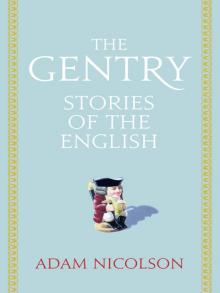 The Gentry
The Gentry Why Homer Matters
Why Homer Matters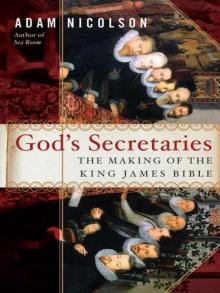 God's Secretaries_The Making of the King James Bible
God's Secretaries_The Making of the King James Bible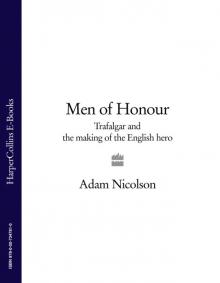 Men of Honour
Men of Honour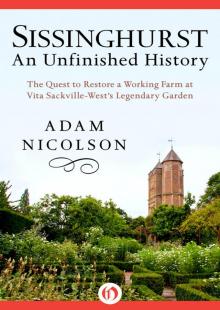 Sissinghurst, an Unfinished History
Sissinghurst, an Unfinished History Smell of Summer Grass
Smell of Summer Grass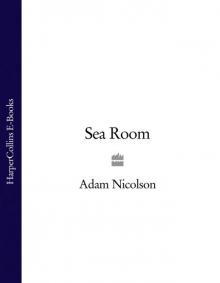 Sea Room
Sea Room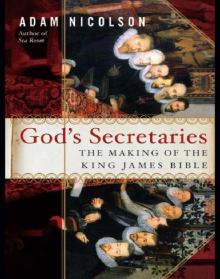 God's Secretaries
God's Secretaries Atlantic Britain
Atlantic Britain